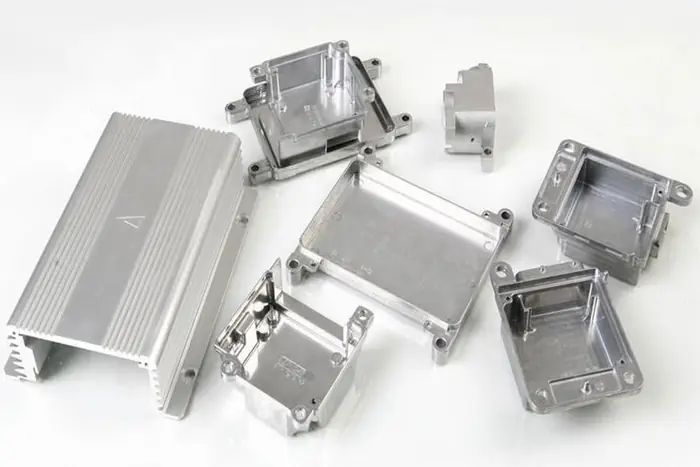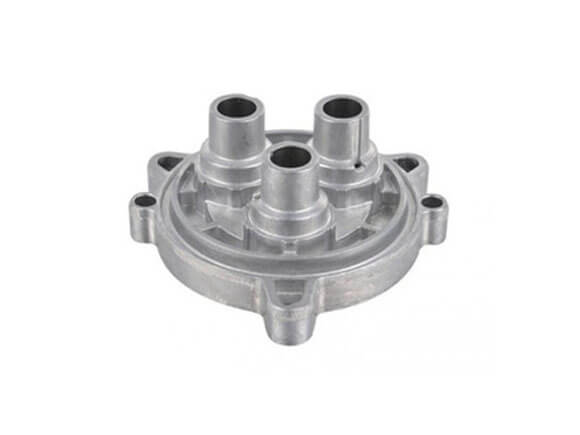Aluminum Casting Company solutions for large-scale manufacturing projects
Wiki Article
Discovering the Innovative Procedures Behind Modern Aluminum Shop Procedures
Modern aluminum factory procedures are going through considerable makeover. Automation and AI are reshaping manufacturing approaches, boosting both effectiveness and accuracy. The combination of 3D printing is enhancing mold production, while sustainability practices are becoming much more important. Each of these improvements plays an essential duty in redefining the market. The ramifications of these modifications expand beyond plain production effectiveness. What opportunities and challenges lie ahead for aluminum foundries in this evolving landscape?The Role of Automation in Light Weight Aluminum Foundries

Furthermore, automation contributes to improved security standards within the shop setting. By moving harmful tasks to machines, human workers can concentrate on supervisory duties and quality assurance, lessening the risk of mishaps. In enhancement, data analytics originated from automated processes provide important understandings into operational performance, resulting in much better decision-making and continual improvement. As the demand for light weight aluminum products expands, the adoption of automation technologies will likely broaden, additionally changing the landscape of light weight aluminum factory procedures.
Improvements in Spreading Technologies
Current developments in casting innovations are transforming aluminum shop procedures. Developments such as 3D printing integration, advanced alloy solutions, and automated process optimization are improving effectiveness and product quality. These advancements are essential in fulfilling the developing demands of the sector.3D Printing Integration
Incorporating 3D printing technology right into aluminum factory procedures has actually revolutionized traditional casting techniques, enhancing both effectiveness and accuracy. This innovative approach enables for the quick production of complex mold and mildews and cores, substantially minimizing preparations and material waste. By utilizing additive production, foundries can create complex geometries that were formerly difficult or difficult to attain with conventional strategies. The flexibility of 3D printing additionally makes it possible for fast style alterations, cultivating an extra agile production process. Furthermore, this assimilation sustains the use of light-weight frameworks, which is increasingly essential in markets such as vehicle and aerospace. As aluminum shops remain to take on 3D printing, they position themselves at the leading edge of technical advancement, driving improvements in product high quality and functional abilities.Advanced Alloy Formulations
The development of sophisticated alloy formulations has greatly boosted casting innovations in aluminum foundry operations. These solutions integrate various elements, such as copper, silicon, and magnesium, to boost mechanical buildings and thermal resistance. By tailoring the composition of aluminum alloys, makers can achieve specific efficiency characteristics that satisfy the needs of varied applications, from vehicle elements to aerospace frameworks. Using sophisticated alloys also adds to lowered weight and enhanced strength, which are important aspects in modern design. Furthermore, developments in alloy advancement make it possible for far better fluidness during casting, resulting in boosted surface area finishes and decreased problems. In general, progressed alloy formulations represent a substantial jump onward, positioning light weight aluminum shops to meet the evolving needs of numerous industries efficiently.Automated Refine Optimization
Advancements in casting modern technologies have led the method for automated procedure enhancement in light weight aluminum shop operations. By incorporating sophisticated software and real-time data analytics, factories can now improve production processes and improve top quality control. Automated systems monitor variables such as stress, temperature, and cooling rates, permitting instant changes that decrease defects and waste. Additionally, maker understanding formulas examine historical efficiency data to predict ideal setups, thus enhancing effectiveness and reducing cycle times. Robotics additionally play a substantial duty, taking care of repeated tasks that enhance security and precision. Overall, these advancements not only drive functional performance yet also enable foundries to meet the expanding need for premium light weight aluminum components in various industries.Smart Production and Market 4.0 Assimilation
The combination of Smart Production and Sector 4.0 within light weight aluminum foundries is transforming operational effectiveness. By leveraging IoT technologies, automation, and robotics, shops can enhance manufacturing processes and decrease downtime. In addition, data analytics supplies essential insights that enhance decision-making and drive continual improvement.IoT in Foundry Workflow
As producers progressively accept the Internet of Things (IoT), factory operations are experiencing a transformative shift towards wise manufacturing and Sector 4.0 combination. Aluminum Casting Company. IoT technologies allow real-time data collection and evaluation, enhancing decision-making processes and operational performance. Sensing units and connected tools keep an eye on tools performance, product use, and ecological conditions, permitting proactive maintenance and resource optimization. This connectivity promotes a much more dexterous manufacturing atmosphere, where adjustments can be made promptly in response to market needs. In addition, IoT facilitates improved traceability and quality assurance, as data from the entire manufacturing cycle can be conveniently accessed and evaluated. Generally, the integration of IoT in foundry procedures considerably improves productivity and drives advancement in light weight aluminum manufacturing processesAutomation and Robotics Integration
Automation and robotics integration is reinventing aluminum factory procedures by improving effectiveness and accuracy. This transformative technique streamlines procedures such as molding, putting, and finishing, minimizing human mistake and increasing result uniformity. By using innovative robot systems, foundries can achieve higher production prices while preserving rigid high quality criteria. Automated systems also allow real-time monitoring and adaptive control, permitting swift adjustments to production specifications. In enhancement, the integration of robotics reduces labor costs and alleviates safety threats related to manual handling of molten metal. As factories embrace wise production principles inherent in Market 4.0, the synergy between automation and robotics solidifies their competitive side, leading the way for sustainable growth and technology in the aluminum spreading industry.Data Analytics for Performance
Using data analytics significantly boosts performance within light weight aluminum foundry procedures, aligning with wise manufacturing and Sector 4.0 principles. By leveraging real-time information collection and evaluation, factories can keep an eye on manufacturing processes, forecast tools failures, and maximize source allocation. This data-driven approach facilitates insightful decision-making, making it possible for managers to improve and determine traffic jams process. In addition, anticipating analytics empowers shops to expect market needs, consequently lowering waste and guaranteeing prompt item delivery. Combination of data analytics with IoT gadgets boosts functional exposure, fostering an aggressive upkeep society. Inevitably, carrying out these sophisticated analytical methods not just boosts performance however also drives innovation, placing light weight aluminum factories to fulfill the advancing needs of the industry while maintaining one-upmanships in a swiftly transforming landscape.Lasting Practices in Light Weight Aluminum Spreading
While the light weight aluminum casting industry has typically encountered environmental difficulties, many shops are currently embracing sustainable practices to reduce their impact (aluminum casting). A significant focus has gotten on reusing light weight aluminum scrap, which not just lowers waste but also preserves power contrasted to primary light weight aluminum manufacturing. Innovative melting innovations, such as induction heaters, improve energy performance and reduced greenhouse gas exhaustsAdditionally, factories are executing closed-loop water systems to decrease water consumption and lower thermal air pollution. The usage of eco-friendly binders in mold-making processes is getting grip, additional lowering damaging exhausts.
Moreover, some facilities are buying renewable resource sources to power procedures, aligning with global sustainability goals. By integrating these methods, the aluminum casting market is evolving towards a much more environmentally liable future, demonstrating that economic development can exist together with eco-friendly stewardship - Aluminum Foundry. These initiatives reflect a dedication to sustainability and the value of ecological liability in manufacturing
Top Quality Control Innovations
As the aluminum spreading industry developments towards sustainability, the significance of high quality control advancements comes to be progressively evident. Modern light weight aluminum shops are embracing advanced innovations to boost their top quality guarantee procedures. Strategies such as real-time monitoring and data analytics permit makers to detect variances and issues early in the manufacturing cycle. Applying computerized examination systems outfitted with maker discovering formulas warranties that products fulfill stringent top quality criteria while reducing human mistake.Moreover, the combination of non-destructive testing methods, such as ultrasonic and radiographic assessments, supplies deeper understandings into get more info the integrity of castings without damaging the product. These technologies not just enhance item reliability but additionally reduce waste, lining up with sustainability goals. Additionally, the fostering of standard high quality structures assists enhance operations throughout various shops, assuring consistency in output. Jointly, these advancements are reshaping quality assurance, fostering a culture of excellence within the light weight aluminum casting field.
Future Trends in Light Weight Aluminum Factory Operations
What technologies lie in advance for light weight aluminum foundry procedures? The future of aluminum shops is poised for change through improvements in automation, man-made knowledge, and lasting methods. The integration of robotics and automated systems is anticipated to enhance effectiveness and precision in the spreading procedures, reducing human error and labor expenses. Furthermore, AI-driven analytics will certainly enable real-time monitoring and predictive maintenance, enhancing functional efficiency and minimizing downtime.Sustainability remains a focal point, with foundries significantly embracing green methods, such as making use of recycled light weight aluminum and establishing low-emission melting modern technologies. Developments in 3D printing are likewise prepared for to revolutionize mold-making, enabling complex geometries and lowered product waste. As the market welcomes digitalization, data-driven decision-making will certainly become pivotal, enabling shops to react promptly to market needs. Collectively, these fads promise to redefine aluminum foundry operations, making them more efficient, sustainable, and versatile to future difficulties.

Often Asked Questions
What Precaution Are Applied in Light Weight Aluminum Shop Operations?
Aluminum foundry procedures execute numerous precaution, including individual protective devices, ventilation systems to take care of fumes, regular safety and security training, emergency situation feedback strategies, and stringent surveillance of temperature and equipment to stop crashes and warranty employee safety.How Do Foundries Take Care Of Labor Force Training for New Technologies?

What Materials Are Generally Reused in Light Weight Aluminum Foundries?
Aluminum factories typically reuse scrap light weight aluminum, consisting of post-consumer products like drink containers, automotive parts, and building and construction materials. This reusing procedure lowers waste and conserves sources, adding to a more sustainable aluminum manufacturing sector.How Does Light Weight Aluminum Casting Impact the Setting?
Aluminum casting influences the setting via energy-intensive procedures, greenhouse gas discharges, and potential regional pollution. Improvements in reusing and sustainable methods can reduce these effects, advertising an extra environment-friendly strategy to light weight aluminum production.What Are the Normal Lead Times for Light Weight Aluminum Casting Projects?
Typical lead times for aluminum spreading jobs vary significantly, normally varying from 2 to six weeks. Variables affecting these timelines consist of complexity, order dimension, and product availability, affecting total production routines in shop procedures.
Automation increasingly plays a necessary duty in aluminum shops, improving effectiveness and precision in the manufacturing procedure. Developments in casting modern technologies have paved the means for automatic procedure improvement in light weight aluminum shop operations. Using information analytics greatly enhances performance within light weight aluminum foundry operations, aligning with clever production and Industry 4.0 concepts. A significant emphasis has actually been on recycling aluminum scrap, which not only minimizes waste however likewise preserves power compared to main aluminum manufacturing. Light weight aluminum shops typically recycle scrap light weight aluminum, including post-consumer items like beverage containers, vehicle parts, and construction materials.
Report this wiki page